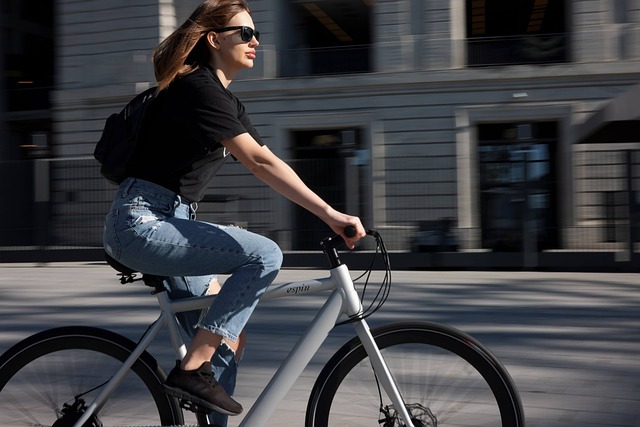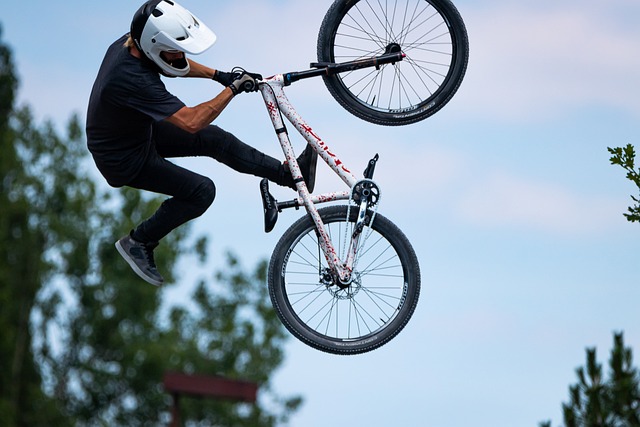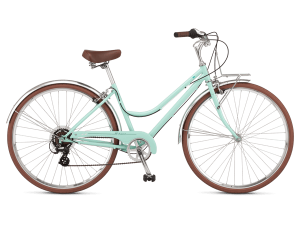Bike tune-up typically costs between $60 and $150. You can choose between a basic tune-up costing $60 and a major tune-up costing $100–150, depending on the level of maintenance your bike requires.
A bike tune-up is necessary, as both the casual weekend rider and the seasoned cyclist are aware. By ensuring that all of its parts are snugly fastened, it keeps your bike operating at its best.
It denotes that the bottom bracket, headset, shifters, brake, and other bicycle components are functional or conditionally performing well. Your bike should get a tune-up on a regular basis as part of its maintenance.
And, what is included in a bike tune-up? Is a bike tune-up necessary? Where should you get your bike tuned-up? I will answer all the questions in the post, please read on.
Table of Contents
What Does It Cost for a Bike Tune-Up?
Depending on the degree of the tune-up that you need and where you go to get it done, it could cost you anywhere from $60 to $150. A basic tune-up will likely land in the range of $60 to $90, while a major tune-up that requires heavy-duty adjustments could bring the final total to well over $120.
While keeping your bike tuned up on a regular basis is essential, you should be aware of all the details before letting the shop work on your bike. It is critical to clarify with the mechanics what is included in the service and the cost before scheduling your maintenance.
It is important to note that there is no industry-wide average for the price of bicycle tune-ups, including both comprehensive services and part-specific maintenance. Some shops might provide a straightforward air-and-oil tune-up for free, while others might charge a fee of about $20.
If you research bike tune-ups online, you’ll find a wealth of information about the need for, duration of, recommended frequency for, and do-it-yourself potential of bike tune-ups. We aim to cover every query you might have about expert bike maintenance in this article.
Why Get One?
It’s likely that you think of your bike as a wise investment if you’re looking for this information. The high cost, however, might be a deterrent, and you might be perplexed as to why your bike needs a tune-up in the first place.
Bikes require routine maintenance to operate at their peak performance, just like cars or large machinery. Tune-ups not only guarantee that your motorcycle is operating at its peak performance, but they also identify any potential safety problems or repairs and increase the lifespan of your vehicle.
Proper fitting and lubrication are essential for any mechanism with metal parts that moves in order to avoid unnecessary wear and ensure proper operation. The elements will do their thing, whether your bikes are cruising on a sidewalk or plowing through the mud, and if they are not assessed, they could cause damage. In order to address these issues, tune-ups frequently include a thorough cleaning.
A bike tune-up is essential for a variety of reasons, not the least of which is that they frequently identify potential issues before they escalate and become costly or even dangerous. A bike tune-up may cost more than you anticipate, but in the long run, you will unquestionably save money.
Furthermore, your bike will ride even more smoothly than the day you bought it!
What is Included in a Bike Tune-Up?
When you request a bike tune-up, you will receive services for headset and bottom bracket adjustments, group set inspection and adjustment, hub and true wheel adjustments, and a light frame clean.
For full details, you can also check the following below:
Headset
One of your bike’s key components is the headset. It controls the machine’s navigational functions and serves as the brain of the vehicle. When driving, you can experience precise and fluid steering if your headset is in good working order.
Additionally, having a poorly tuned headset can result in traffic accidents. If your headset isn’t operating at its best, you can’t find the right way to go on the road. You must regularly inspect your bike headset for your safety.
The grit and dirt that accumulate on your headset must be cleaned off. You can avoid the dirt breaking or causing damage to this particular part in this way. Your ride may be impacted and you may find it more difficult to control your biking if dirt and grit get into your headset.
Get the headset cleaned, paying special attention to the upper and lower bearings. It ensures smooth and hassle-free steering while enabling the fort to function effectively.
The repairman would remove the stem and handlebar while removing the fork from the bike frame in order to accomplish this. Grit, grease, and dirt will then be removed with a cloth. Once more, grease will be applied to the headset.
Bottom Bracket
Another crucial component of your bicycle is the bottom bracket. It is where the bike frame and pedals come together to transfer force and energy to the wheels. Your bike can move correctly thanks to a bottom bracket.
Most bike shops make sure the bottom bracket is in excellent condition because it is a necessary component of the fundamental tune-up procedure. If the bottom bracket is too loose or too tight, it won’t work properly. The repairman can either tighten it or change the bottom bracket as necessary if this occurs.
Front and Rear Derailleurs
If you regularly ride a bike on rough, hilly roads, front and rear derailleurs may become damaged or worn out. It would be challenging to shift gears if your bike’s derailleurs were out of tune. It will make it difficult for you to ride your bike on challenging terrain with steep slopes.
To ensure you have the best possible bike ride, it is crucial to set both derailleurs correctly. The derailleurs must always be inspected while the bike is being tuned up, so make sure to do that. By doing this, it will be ensured that the chain won’t come off or cause the gear to change on its own when shifting.
Your derailleurs will be examined to determine whether they are worn out during the tune-up process. You might need to replace or adjust the part if it is seriously damaged. This will ensure a derailleur that is more accurate, quiet, and practical.
Adjust Brake Pads + Brake Levers and Cables
Additionally directly affecting your riding experience are brake pads, levers, and cables. These elements must be properly adjusted to meet your needs. i.e., you can ride your bike effectively and conveniently.
Make sure none of the cables on your bike, particularly those near the rear brake, are slack. If the cables become stuck, move it back to its original position after adjusting it. Additionally, the group bike sets, calipers, and lever are all snugly fastened.
The brake pad should then receive your attention, and it should touch the center of the braking surface on the rim. To avoid squeaking or unnecessary noise, make sure the front of the pad is in contact with the rim.
Chain and Check Cassette and Chainring
Chain, cassette, and chainring maintenance is required for the following bike parts. Given how quickly they can wear out, you should check the chain frequently. If this takes place, a bad chain may also have an impact on how well the cassette and chainring function.
Chain replacement is essential once a year, especially if you ride your bike frequently. On the other hand, the bike’s cassette and chainring need to be properly lubricated and tuned up.
Hubs + True Wheels
It’s crucial to take good care of the hubs and wheels on your bicycle. Your true wheels and hubs should be kept in check with routine maintenance.
For the bike wheels to work properly, make sure they are firmly fastened to the bicycle. Your ride ought to be balanced and the wheels ought to support your weight. If it is not functioning properly, you should check for potholes, curbs, or loose angles.

Is a Bike Tune-Up Necessary?
Yes, whether you ride your bike for recreation or for a living, you should always have it tuned up. A thorough tune-up guarantees that your bike not only functions properly, but also functions properly for your preferences and body. Similar to how a musician needs an instrument that is tuned to their needs, a cyclist needs a bike that is tuned to their needs as well.
No matter the bicycle’s design or intended use, it will frequently be carrying the cyclist’s weight while moving at a fast pace, covering ground, and occasionally even traversing rough terrain. To ensure that your motorcycle can perform its function without putting you or anyone else at risk of injury, it is crucial for your safety that every component is in good working order.
The longevity of your two-wheeler is also dependent on regular maintenance of your bicycle. Your bike will last longer if you take better care of it. The life of your car will be extended if you invest in regular maintenance. Your bicycle won’t need to be replaced in the future, and you won’t have to pay more for extensive and pricey long-term repairs.
How Often Should You Get a Bike Tuned-Up Or Serviced?
Depending on how frequently you ride, you may require periodic maintenance. At a minimum, you should have your bike tuned up or serviced once per year. However, if you ride your bikes a lot you should get your bike tune-up/served every 25 hours or every couple of months.
Where Should You Get Your Bike Tuned-Up?
Depending on the type of bike you have, you should choose a specific location for servicing or tuning. It won’t matter too much where you get your bike serviced if it’s a relatively inexpensive bike ($200-500). However, if you have a more expensive bike, it would be wise to take it to a shop that specializes in high-end bikes. Also, remember some shops/mechanics specialize in different types of bikes, for example, some will only deal with road bikes or mountain bikes. The right mechanic will have the experience and expertise to provide your bike with the necessary maintenance if you bring it to them.
How Long It Takes?
Have you considered getting your bike tuned up? You need to have a realistic expectation of how long your bike tune-up will take before you leave for your LBS, assuming it will be a quick trip.
While the length of time ultimately depends on the number of bikes in the Service Department that are in front of you, tune-ups are typically finished in a few hours. A basic tune-up should take between 30 and 60 minutes, while a major tune-up may take between 60 and 120 minutes.
How Often Should You Get One?
You will require a tune-up more frequently than the typical weekend rider if you are an avid cyclist who logs hundreds of miles every week.
You should have your bike tuned up at least once a year. The frequency of your rides, the weather when you ride, and how you store your bike are all variables that affect this figure.
After putting their bikes away for the winter, riders will get a spring tune-up. You might need tune-ups twice a year if you choose to ride in the cold as well as harsher elements like mud and rock.
The good news is that most cyclists, especially those who consider themselves frequent riders, perform their own maintenance and tuning. Saving money and learning more about your bike and how to maintain it at the same time are two great benefits of this.
Can I Tune-Up My Own Bike?
Yes, but it also depends on how much time you are willing to spend developing the necessary abilities and acquiring the necessary tools. A skilled bike mechanic will be equipped with the resources and know-how necessary to treat your bike right. Having said that, every bike owner ought to have a set of Allen keys for checking the bolts after each ride, a pump to guarantee proper pressure, and some chain lubricant.
If you’re a serious bike rider, it might be worth your while to invest in the necessary tools as and when you need them, while also learning the necessary skills from online service manuals. Although getting their bike serviced at the neighborhood bike shop is much simpler for the average rider.
What to Do After You Have Bought a New Bike?
Basic check – You’d be surprised at how many bolts can get missed, so it’s always worth giving a new bike a bolt check, even if the bike shop has been examined and tuned up.
Warranty – many bike manufacturers require you to fill out an online form with the details of your new bike to make the bike’s warranty valid. It’s a good idea to complete this immediately because you frequently have a short window of time to do so.
Accessories – when you get a new bike it’s often nice to add your own touch. Some people favor particular grips, pedals, or handlebar styles. When riding in wet conditions, a straightforward mudguard can be very helpful for mountain bikers.
The Bottom Line
The needs of their bikes can differ just as much as the individual styles and personalities that each biker brings to the sport. The cost of the tune-up depends on the bike’s condition and the shop itself. But cyclists thinking about getting a tune-up shouldn’t let the $60 to $150 price tag stop them. For the rider’s safety and the longevity of the bicycle, regular professional maintenance is absolutely necessary.
You should seek advice from your neighborhood bike repair shop if you have any concerns about your particular model of bicycle and how frequently you ride it. Professional bike mechanics can advise you on what needs to be done, as well as on costs and wait times for their services.
Before leaving the shop with your bike, make sure to test-ride it to ensure that the tune-up was successful and that everything feels secure and at ease.
Related articles:



